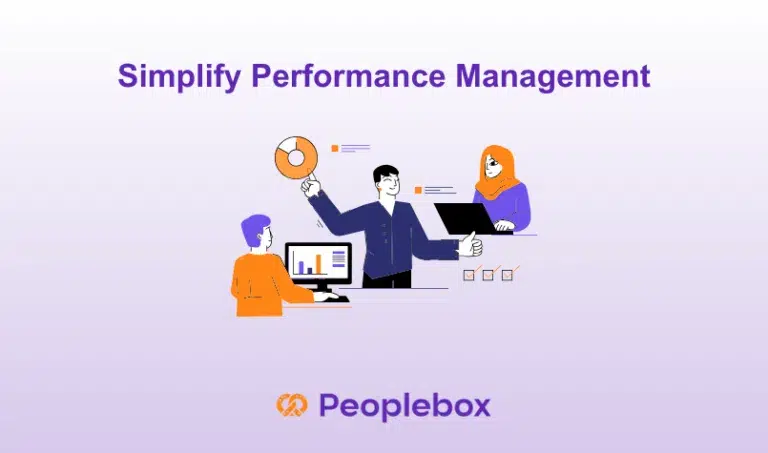OKR (Objectives and Key Results) is a popular goal-setting method that is used to set and align ambitious, specific, and measurable goals throughout an organization.
This method works very well for remote teams because it ensures that employees are always aware of what their team members are doing and are not left out of the loop.
John Doerr, author of Measure What Matters, described the purpose of OKRs:
By clearing the line of sight to everyone’s objectives, OKRs expose redundant efforts and save time and money.
Even in a traditional office setting, creating a culture of transparency becomes difficult at times.
Remote work is by nature isolated, hence it is more challenging to unite team members and ensure dissemination of necessary information.
To get the best out of the method, it should be implemented properly and regular follow-ups should be conducted.
Often, it takes 3-4 quarters to get the process right and ensure that all team members are using the method correctly.
OKRs should be geared toward engaging all remote workers, keeping them motivated, and encouraging them to take accountability for their tasks or actions.
Frequently asked questions: OKRs in remote teams

We have compiled a list of OKR FAQs and their suitability for remote teams.
Are OKRs meant for remote companies of a specific size?
The beauty of the OKR method of goal-setting is that it can be customized for one’s personal goals i.e. for setting goals for just one person or it can be used to set goals for an entire company.
Thus, OKRs can be implemented in any remote company–big or small.
How should I get started with OKRs for remote teams?
If you’re implementing OKRs for the first time in your remote company, start by determining the top three priorities for your company.
Once you have nailed them down, they become your Objectives.
You can then create up to five Key Results for each Objective that will describe how you intend to achieve the Objective.
To avoid falling off the wagon, OKRs should be frequently reviewed. This also helps managers give timely feedback.
You can use a spreadsheet to manage your OKRs or you can take the help of an OKR software.
Keep your remote teams aligned with one-of-its-kind OKR software
How will OKRs benefit my remote company?
Leaders and managers of a remote company have to be intentional about building an inclusive culture so that every employee is on the same page about company strategy, process and protocols, and so on.
OKRs help remote team members achieve shared goals that are aligned across all the levels in the company.
Remote Workers workers know what others are doing and how they need to achieve their own goals. This helps organize teamwork better and promotes transparency and autonomy.
Since OKRs for remote teams are reviewed frequently, it is a good opportunity to touch base with all team members. Informed decisions can be taken based on correct data and teams can course-correct as required.
Learnings from weekly check-ins can be implemented to improve processes and make them more efficient.
5 Ways to Lead a Transparent Culture in the Workplace
How can I convince my remote team to adopt OKRs?
Employees may consider setting goals and reporting to be a waste of time or just another ploy to make them stay at work for longer.
Leaders and managers can obtain buy-in for OKRs by explaining the benefits to their reports. The advantages of clarity, transparency, and autonomy are the most compelling.
Remote workers are disadvantaged by being physically separated by their team members, making communication and information-sharing challenging.
OKRs work best when everybody in the organization uses them correctly, thus employees should understand how the method can make their jobs easier.
The major benefits for remote team members are:
- Improved productivity due to the focus on the right goals that are aligned with the company’s business goals
- Recognition for good performance and staying up-to-date on what others are doing
- Clarity about expectations from employees and specific key results by which progress is measured
OKRs Guide: The Only OKR Guide You Need in 2023

How many OKRs should a remote team have?
Although there is no hard-and-fast rule about the number of OKRs a remote team should have, it is suggested that a team have no more than 3 Objectives.
For each Objective, there may be 3-5 Key Results.
There should not be too many OKRs because it becomes difficult to focus on all of them.
Ideally, company objectives should be set 2-4 weeks before the coming quarter so that teams have enough time to discuss them and set their own OKRs.
How to implement OKRs
Should remote OKRs be set from top to bottom?
Usually, the top-down approach is used to set OKRs wherein the CEO or top management establishes the top 3 priorities for the company.
Then, they ask managers to set team OKRs that are aligned with the company goals.
However, the bottom-up approach can also be used wherein employees get together with the management to give suggestions for the next quarter’s goals.
The team OKRs are firmed up after a discussion with everyone present.
Should OKRs be quarterly or annual?
Quarterly OKRs are considered ideal because the time period is sufficient to allow teams to work on the set goals and observe results, but not too long such that employees lose interest.
However, OKRs can be set for any length of time–from a month to a year.
What are some examples of remote OKRs?
It is a good idea to take a look at some well-written examples of OKRs before setting your own goals.
Different teams, such as Marketing, HR, Sales, Finance, Product Management, will have different OKRs tailored to their specific requirements.
General Example:
Objective: Gain 50,000 visitors per month to the website using SEO techniques
Key Result 1 – Rank on the first page on Google for certain keywords
Key Result 2 – Create 15 pieces of content per month
Key Result 3 – Gain 5X followers on LinkedIn
Find Real-life OKR examples for Remote Teams HERE!
Should OKRs for remote teams be tied to compensation?
No, it is NOT recommended that OKRs be tied to employee bonuses or salary schemes.
This ensures that remote team members remain willing to take risks and be ambitious in achieving their OKRs.
Also, OKRs are meant to help remote team members bond and build trust with each other, not compete against each other. Thus, linking OKRs to bonuses will destroy its core purpose.
However, OKRs should reflect the tasks or actions that a remote team member is expected to do. Thus, many companies correlate OKRs with bonuses.

What are stretch goals and should I use them?
Stretch goals are ambitious goals that are challenging, but not necessarily difficult to achieve. Such goals compel remote team members to take risks while working toward achieving them.
If you’re just starting out with the OKR methodology, don’t use stretch goals. Or, if you do, ensure that they’re communicated clearly so that expectations can be managed.
What is the difference between KPIs and OKRs?
One of the OKR FAQs that HR leaders and managers need clarity on is the difference between Key Performance Indicators (KPI) and OKRs.
Although KPIs and OKRs look similar, they are not the same. They are also not mutually exclusive.
OKRs describe outcomes needed to achieve a goal, in specific and measurable terms.
KPIs (Key Performance Indicators) measure the output, quality, or quantity of an ongoing process or activity.
Often, a KPI that needs to be improved can be used to create an OKR, with the KPI becoming one of the Key Results of the Objective. So, the Key Result incorporates the KPI.
You’ll need both KPIs and OKRs to meet your goals successfully.
Which tool should I use to track OKRs for remote teams?
People use both spreadsheets and OKR software to update and track their OKRs.
Companies with less than 100 employees may use spreadsheets successfully. However, spreadsheets require manual updating and this discourages people from using it often.
Larger companies invest in OKR software to track and manage their OKRs.
Should OKRs for remote teams be public or private?
In the interest of transparency, OKRs for remote teams should be publicly available. This allows employees to see what others are doing.
Google famously uses public OKRs.
Should OKRs be linked and aligned based on hierarchy?
All the employees of a remote company should work toward achieving the same goals. Thus, they should have a shared, hierarchical framework of OKRs.
In this way, employees can also know what other parts of the company are doing and how their work contributes to the shared goal.
Felipe Castro OKR Book: Perfect guide for Beginner’s
Conclusion
We hope this exhaustive list of OKR FAQs has helped dispel most of your concerns about the benefits of using the OKR methodology for remote teams.
OKRs are meant to empower the employees of an organization and bring clarity to their roles and the expectations from them.
No wonder famous and successful companies around the world like Google, Twitter, LinkedIn, and Netflix (to name a few!) have embraced this simple, yet effective goal-setting methodology.







